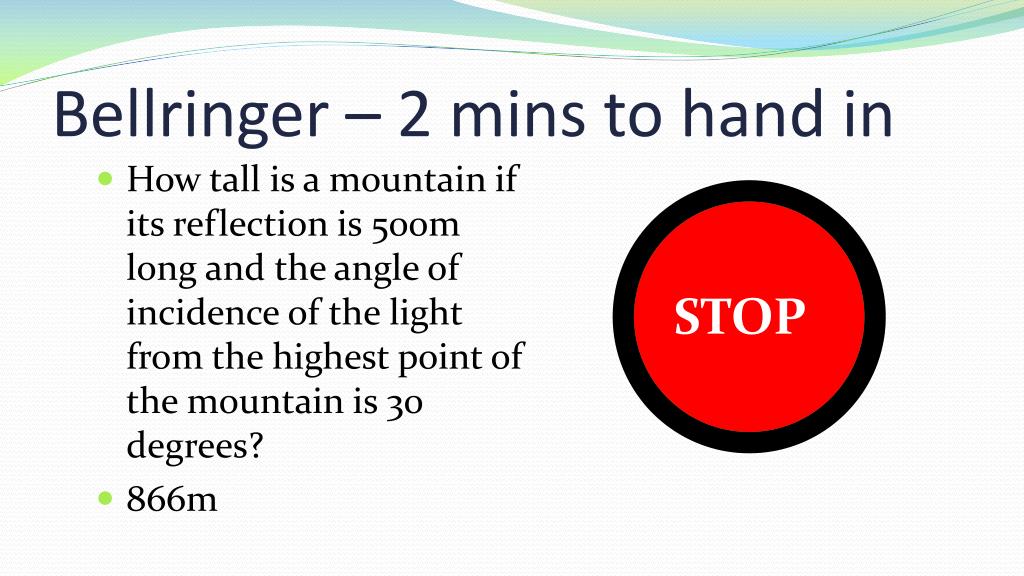

- #Angle of reflection angle of incidence mountain picture how to#
- #Angle of reflection angle of incidence mountain picture free#
#Angle of reflection angle of incidence mountain picture how to#
COVID-19 Portal While this global health crisis continues to evolve, it can be useful to look to past pandemics to better understand how to respond today.Student Portal Britannica is the ultimate student resource for key school subjects like history, government, literature, and more.From tech to household and wellness products. Britannica Explains In these videos, Britannica explains a variety of topics and answers frequently asked questions.This Time in History In these videos, find out what happened this month (or any month!) in history.#WTFact Videos In #WTFact Britannica shares some of the most bizarre facts we can find.Demystified Videos In Demystified, Britannica has all the answers to your burning questions.Britannica Classics Check out these retro videos from Encyclopedia Britannica’s archives.
#Angle of reflection angle of incidence mountain picture free#
Combine this with the fact that without free electrons it is VERY difficult to smooth a surface, it will give you no chance for a decent (specular) reflection. When a new photon is emitted, it will run into other atoms (it's not at the surface anymore!) and keep the reaction going until at the surface, photons are reflected in random directions. So why does this not happen at any surface? Well, the above only applies to surfaces with lots of electrons, found in materials where electrons are free - for example metals! Surfaces where all electrons are bound will not absorb the photons immediately - they'll penetrate the first few layers of atoms unhindered until by chance they are absorbed. No longer the photons that are emitted upwards are in phase with eachother, but only the photons that are emitted at the exact same angle as the incident photons are in phase. When an electron emits a photon, and there are many photons around it who all have the same phase and direction, the emitted photon will copy the phase and direction of the photons around it! So very quickly, all photons that are emitted in random directions die out and only photons that are emitted perfectly in phase with eachother remain. Now something interesting happens - something that also explains why lasers work. Photons that are in phase (all the photons that are emitted upwards) will constructively interfere with eachother. Photons that are out of phase will tend to cancel eachother out. The photons that are emitted at an angle however, will be out of phase with eachother (since there is a distance between the electrons, if two photons are emitted at any angle at the same time, there will be a slight delay between them). Now you have many electrons that are being bombarded by even more photons, all emitting photons in many directions. Let's assume that the beam of light hits the reflecting surface directly from above, so the angle of incidence is 0 degrees. Hint: this is where the wave nature of light comes into play. If this is the only electron in the neighbourhood that releases a photon, it will go in any random direction. When it does, it needs to get rid of its extra energy. This chance increases over time, so it's pretty certain that it will jump back quite quickly. Thus, there is a chance that it spontaneously jumps back to a lower energy state. This does not last long the electron left an "empty" energy state below it, which is an energetically more favorable position for it. When a photon hits an electron, its energy gets absorbed and the electron goes into a higher energy state. It runs into a wall of atoms - lots of nuclei surrounded by electrons (also energy packets - there's more to it but let's not write out all of quantum mechanics here). Now let's zoom in and look at what happens when the photon hits any material. Not because we must, but because we can! There's a TL DR below.Ī beam of light can be thought of as a stream of energy packets (photons, which are the quanta of light - lots of interesting words to look up in the dictionary already). However, to quote Leonardo DiCaprio: we need to go deeper. The answer by harshit54 is very concise and clear and gives you answers in multiple layers of understanding.


 0 kommentar(er)
0 kommentar(er)
